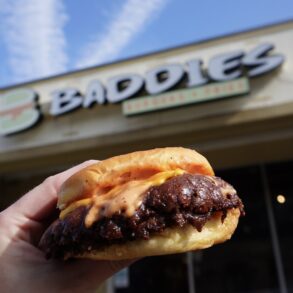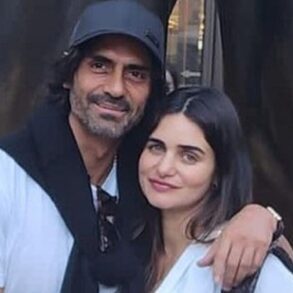Todd Niall covered the 2021 America’s Cup for Stuff, his sixth regatta.
OPINION: I learned valuable lessons about the world of the America’s Cup during the second Auckland defence in 2003.
Prior to the regatta I was invited by Team New Zealand on a select media outing in a chase boat to watch testing and trials of the defender NZL82. Cone of silence stuff.
After a while another chase boat offloaded onto ours a broken boom, that swing-arm off the mast, on the bottom of the mainsail. I was astonished at the thinness of the carbon fibre structure.
Less weight above the waterline is everything.
In a pre-regatta media conference, the skipper Dean Barker told assembled international journalists he couldn’t think of anything in their build-up that could have gone better.
On the morning of the first race, a buzz went around the media centre. People who seemed to know, had heard that NZL82’s radical design feature the “hula” – a second hull layer at the rear – was worth more than a minute in a race, and the contest against Swiss Alinghi was a done deal.
Within hours, NZL82 had gear failures, took on a large volume of water, more than the blue bucket could shift, and withdrew. In race 4 its mast snapped and after a 0-5 scoreline the Cup left town for 14 years.
Lesson: Believe what you see, not what you hear.
Ricky Wilson/Stuff
American Magic skipper Terry Hutchinson with Stuff’s Todd Niall at the America’s Cup in Auckland in 2020
In 2013 in San Francisco, Team New Zealand pioneered the use of foils on the giant AC72 catamaran, and but for being photographed in testing on the Hauraki Gulf, may have left defender Oracle Team USA stuck with a conventional non-foiling boat.
The Kiwi challengers romped out to an 8-1 lead over the Americans, just one short of victory.
A former senior America’s Cup designer told me it was a done deal, that Oracle Team USA’s boat was a dog – just look at it – and there was no comeback.
After an unscheduled break in the regatta, during which Jimmy Spithill’s crew mastered how to get the best out of their boat, they won 8-in-a-row in one of the greatest sporting comebacks ever.
Chris Cameron/Supplied
Team New Zealand was one race short of victory in 2013 when Oracle Team USA when 8 races in a row
I am an unashamedly fascinated America’s Cup onlooker. Each of the six editions I have covered has been unique.
2000 was national euphoria, a re-run of the Peter Blake-run team’s 1995 5-0 win in San Diego, staged in an Auckland waterfront corner re-developed from a tatty industrial backyard.
2003 was the opposite, a campaign tinged with public division over the sailing core of the 2000 team, switching to Switzerland’s Alinghi which took the Cup to Valencia, Spain.
In 2007 Valencia, on the Mediterranean staged perhaps the biggest and best event yet, attracting teams from China to South Africa in a regatta which made a big enough profit to be able to return millions to Team New Zealand, which had lost again in a closer encounter with Alinghi.
Todd Niall/Stuff
New Zealand fans were out in force to support Team New Zealand in Valencia, Spain for the 2007 America’s Cup
Despite the spectacle, there was a tetchy vibe from Alinghi towards many New Zealand media.
Valencia was also the first and most spectacular bidder in the new hosting model in which the regatta was bid for by aspiring cities, rather than going to the home port of the victor.
Five years later Valencia was broke and living off federal government welfare.
2013, the next multi-nation Cup regatta in San Francisco the hometown of defender Oracle Team USA, turned out to be everything that Valencia wasn’t, in both good and bad ways.
Ezra Shaw/Getty Images
Team New Zealand skipper Dean Barker after being defeated in the America’s Cup in San Francisco
The enormous AC72 catamaran concept helped deter all but four teams to an event which the host city proportionately scaled back its investment, to “hard-to-find” status.
As a member of the New Zealand media, there was at least an absence of hometown arrogance thanks to the Cup challenger’s early, and seemingly unstoppable dominance.
Bermuda in 2017 might have looked glamourous on television, but there was a dour, almost hostile tone towards anyone associated with New Zealand.
Defender Oracle Team USA had become the local heroes, first for having brought the event to Bermuda, but also pitching the line that for the cup to stay their, they needed to win.
Clive Mason/Getty Images
Victory in Bermuda in 2017 broke a 14-year streak of defeats for Team New Zealand
Other challengers had supported the notion of the island being a longer term venue, making Team New Zealand the baddies, who might take it all away. As they did.
Sweden’s Artemis was the only one which staged the “normal” media open day.
Covid-19 dampened some of the waterfront fervour in Auckland in 2023, but the success of the Team New Zealand-conceived foiling monohull, launched a new era for the cup.
That a New Zealand defence will be staged offshore, in Barcelona, is also a new era in this country’s 37-year cup history, and remember, ignore what people say beforehand – believe what you see as it happens.
This post was originally published on this site be sure to check out more of their content.



